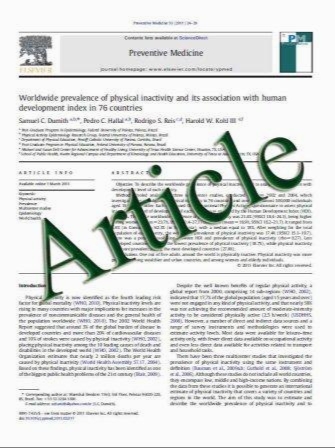Hypertrophy of the lumbar ligamentum flavum is associated with inflammation-related TGF-â expression
- نوع فایل : کتاب
- زبان : انگلیسی
- مؤلف : Mario Lِhr , Jürgen Anton Hampl , Jin Yul Lee , Ralf-Ingo Ernestus , Martina Deckert , Werner Stenzel
- چاپ و سال / کشور: 2011
Description
Background Despite the significance of hypertrophy of the ligamentum flavum (HLF) in the disease progress of neurogenic claudication, the cellular mechanisms underlying the gradual fibrotic thickening of the ligamentum flavum remain poorly understood. The aim of our study was to get insight into the contribution of inflammatory mechanisms to the development of hypertrophy. Methods Specimens of hypertrophied ligamenta flava were obtained at surgery from 20 patients with acquired lumbar osteoligamentous spinal canal stenosis from the central part of the ligament. Paraffin sections were stained with hematoxylin and eosin and Elastica van Gieson to evaluate extracellular matrix architecture, and immunohistochemistrywas performed to characterize the inflammatory reaction and the sources of transforming growth factor beta (TGF-â) expression. Sections of normal ligamenta flava obtained from corresponding anatomical sites and stained in parallel served as a control. Results HLF was characterized by a considerable distortion of the elastic matrix and fibrotic transformation by extracellular collagen deposition. All specimens showed highly inflammatory cellular infiltrates confined to regions exhibiting marked degeneration of the elastic matrix composed mainly of macrophages, scattered T lymphocytes, and neovascularization, thus representing a chronic inflammation. Surprisingly, macrophages as well as vascular endothelial cells but not fibroblasts showed a strong expression of TGF- â, a strong inducer of extracellular collagen deposition. Conclusions Macrophages were identified as a major cellular source of TGF-â in advanced HLF and may perpetuate further hypertrophy. This finding suggests that modulating the immune response locally or systemically could prove to be effective for impeding the disease progress.
Acta Neurochir (2011) 153:134–141 DOI 10.1007/s00701-010-0839-7 Received: 17 June 2010 / Accepted: 4 October 2010 / Published online: 20 October 2010 # Springer-Verlag 2010


